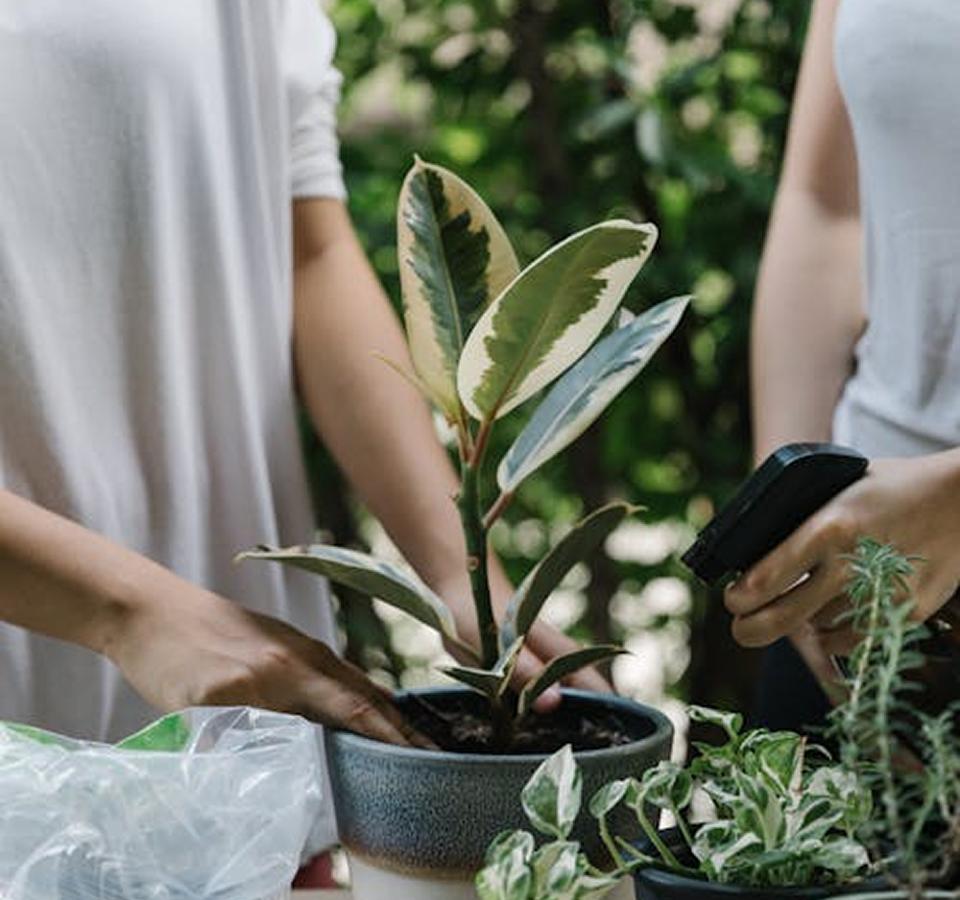Comprehensive Guide to Garden Maintenance in Yeading
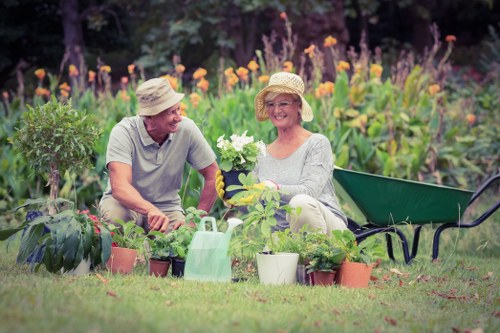
Introduction to Garden Maintenance
Maintaining a beautiful garden in Yeading requires a combination of **dedication**, **knowledge**, and the right tools. Whether you're a seasoned gardener or a beginner, understanding the nuances of garden maintenance can transform your outdoor space into a lush, vibrant oasis.
Yeading, with its unique climate and soil conditions, offers a variety of challenges and opportunities for gardening enthusiasts. From managing seasonal changes to selecting the best plants, effective garden maintenance is key to ensuring your garden thrives year-round.
In this article, we'll explore essential tips and strategies for garden maintenance in Yeading, helping you achieve a stunning and sustainable garden.
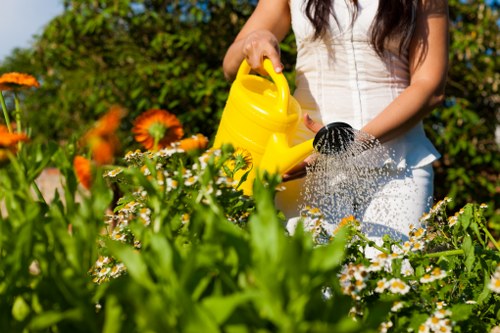
Understanding Yeading’s Climate and Soil
Climate Considerations
Yeading experiences a temperate climate with moderate rainfall and mild temperatures. Understanding these climatic conditions is crucial for selecting appropriate plants and scheduling maintenance tasks.
The average temperature ranges from cool winters to warm summers, making it important to choose plants that can withstand temperature fluctuations. Additionally, adequate rainfall supports a variety of plant life, but proper drainage is essential to prevent waterlogging.
Soil Composition
The soil in Yeading is typically a mix of clay and sandy loam, providing good drainage and nutrient retention. However, conducting a soil test can help determine specific nutrient needs and pH levels, ensuring optimal plant health.
Amending the soil with organic matter like compost can enhance fertility and structure, promoting robust plant growth. Regular soil maintenance is a cornerstone of successful garden upkeep.
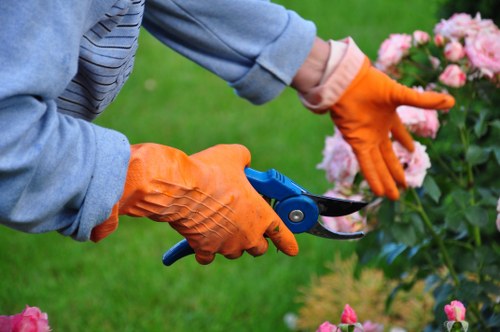
Seasonal Garden Maintenance Tasks
Spring Maintenance
Spring is the perfect time to rejuvenate your garden. Begin by clearing out winter debris and preparing the soil for planting. Prune any overgrown shrubs and trees to encourage healthy growth.
- Plant new seeds and seedlings to take advantage of the growing season.
- Apply a balanced fertilizer to promote vigorous plant development.
- Inspect and repair garden equipment to ensure it's ready for use.
Summer Care
During the summer months, focus on regular watering and monitoring for pests. Mulching can help retain soil moisture and suppress weed growth.
Pruning and deadheading flowers encourages continuous blooming, while staking tall plants provides support against strong winds.
- Maintain consistent watering schedules, especially during dry spells.
- Use organic pest control methods to protect your plants.
- Harvest vegetables and herbs regularly to stimulate further production.
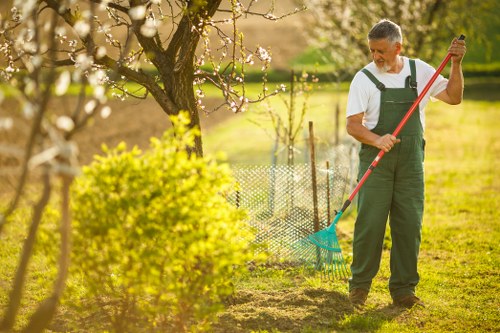
Autumn and Winter Maintenance
Autumn Preparations
As autumn approaches, begin to prepare your garden for the cooler months. Remove spent plants and add compost to enrich the soil for the next planting season.
Winterization
Winter maintenance involves protecting your garden from frost and cold temperatures. Cover delicate plants with frost cloths and ensure that perennials are mulched adequately.
- Store garden tools and equipment in a dry place.
- Trim back perennials to prevent damage from snow and ice.
- Plan your garden layout and order seeds for spring planting.
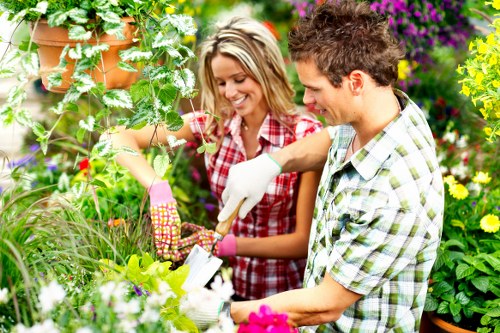
Choosing the Right Plants for Yeading Gardens
Perennials vs. Annuals
Selecting the right mix of perennials and annuals can enhance the beauty and sustainability of your garden. Perennials provide consistent structure, while annuals offer vibrant, seasonal color.
- Perennials: Lavender, peonies, and hostas thrive in Yeading’s climate.
- Annuals: Marigolds, petunias, and zinnias add a splash of color each year.
Drought-Resistant Plants
Incorporating drought-resistant plants can reduce the need for excessive watering and ensure your garden remains resilient during dry periods.
- Succulents like aloe vera and agave are excellent choices.
- Native plants such as sedum and echinacea are well-adapted to local conditions.
Shade and Sun Plants
Properly categorizing plants based on their sunlight preferences ensures optimal growth. Yeading's varied light conditions can be leveraged to create diverse garden zones.
- Sun-loving plants: Roses, sunflowers, and tomatoes flourish in full sunlight.
- Shade-tolerant plants: Ferns, hostas, and impatiens thrive in lower light areas.

Essential Tools for Garden Maintenance
Basic Gardening Tools
Investing in the right tools makes garden maintenance more efficient and enjoyable. Essential tools include:
- Pruning shears: For trimming and shaping plants.
- Gardening gloves: Protect your hands from thorns and dirt.
- Shovel and spade: For digging and soil preparation.
Advanced Equipment
For more extensive garden maintenance, consider adding advanced equipment to your toolkit. These tools can streamline tasks and enhance productivity.
- Lawn mower: Keeps your lawn neatly trimmed.
- Hedge trimmers: For maintaining and shaping hedges.
- Wheelbarrow: Facilitates the transport of soil, plants, and tools.
Maintenance and Storage
Proper maintenance of your gardening tools extends their lifespan and ensures they remain effective. Clean tools after each use and store them in a dry, organized space.
- Sharpen blades regularly for optimal performance.
- Oil metal parts to prevent rusting.
- Store tools in a designated area to avoid damage and loss.

Irrigation and Water Management
Efficient Watering Techniques
Effective irrigation is vital for maintaining a healthy garden. Utilize efficient watering techniques to conserve water and ensure plants receive adequate moisture.
- Drip irrigation delivers water directly to plant roots, reducing evaporation.
- Soaker hoses provide a slow, steady supply of water to plants.
- Watering early in the morning minimizes water loss and prevents fungal diseases.
Rainwater Harvesting
Harvesting rainwater is an eco-friendly method to supplement your garden's water supply. Install rain barrels to collect and store rainwater for later use.
- Set up gutters to direct rainwater into storage containers.
- Use collected rainwater for watering plants during dry periods.
- Reduce reliance on municipal water sources, promoting sustainability.
Soil Moisture Management
Maintaining optimal soil moisture levels is crucial for plant health. Mulching helps retain moisture, suppress weeds, and regulate soil temperature.
- Apply a layer of organic mulch around plants.
- Avoid overwatering to prevent root rot.
- Monitor soil moisture regularly to adjust watering schedules.

Pest and Disease Control
Identifying Common Pests
Yeading gardens may encounter various pests that can damage plants. Early identification and management are essential to prevent infestations.
- Aphids: Small insects that suck plant sap, causing wilting.
- Slugs and snails: Feed on leaves and stems, leaving unsightly holes.
- Spider mites: Cause speckled leaves and reduced plant vigor.
Natural Pest Control Methods
Opt for eco-friendly pest control strategies to protect your garden without harming beneficial insects.
- Introduce natural predators like ladybugs and dragonflies.
- Use neem oil or insecticidal soap to manage pest populations.
- Implement companion planting to deter unwanted insects.
Preventing Plant Diseases
Plant diseases can spread quickly if not addressed promptly. Maintain good garden hygiene to reduce the risk of infections.
- Remove and dispose of diseased plant material.
- Avoid overhead watering to minimize moisture on leaves.
- Rotate crops annually to prevent soil-borne diseases.

Lawn Care and Maintenance
Grass Selection
Choosing the right type of grass is fundamental to establishing a resilient and attractive lawn in Yeading.
- Creeping Red Fescue: Tolerates shade and foot traffic.
- Perennial Ryegrass: Offers quick germination and dense growth.
- Bermuda Grass: Ideal for sunny areas with high wear resistance.
Mowing Practices
Proper mowing techniques promote healthy grass growth and enhance the lawn's appearance.
- Mow at the recommended height for your grass type.
- Keep mower blades sharp to ensure clean cuts.
- Avoid cutting more than one-third of the grass blade at a time.
Weed and Thatch Management
Managing weeds and thatch buildup is essential for maintaining a healthy lawn.
- Apply pre-emergent herbicides to prevent weed seeds from germinating.
- Use post-emergent treatments for existing weeds.
- Aerate the lawn to reduce thatch buildup and improve soil health.

Mulching and Composting
Benefits of Mulching
Mulching is a key practice in garden maintenance, offering numerous benefits for plant health and soil quality.
- Retains soil moisture, reducing the need for frequent watering.
- Suppresses weed growth, minimizing competition for nutrients.
- Regulates soil temperature, protecting roots from extreme conditions.
Types of Mulch
There are various mulching materials to choose from, each with its own advantages.
- Organic Mulch: Includes wood chips, straw, and compost, which enrich the soil as they decompose.
- Inorganic Mulch: Comprises gravel, black plastic, and landscape fabric, offering long-term weed suppression.
Composting for a Sustainable Garden
Composting transforms organic waste into nutrient-rich soil amendments, promoting a sustainable gardening ecosystem.
- Collect kitchen scraps and garden waste for composting.
- Maintain a balanced ratio of green and brown materials.
- Turn the compost regularly to accelerate decomposition.

Pruning and Trimming Techniques
Importance of Pruning
Pruning is essential for the health and aesthetics of your garden plants. It encourages new growth, improves air circulation, and maintains desired shapes.
- Remove dead or diseased branches to prevent the spread of infections.
- Shape plants to enhance their natural form and structure.
- Control the size of shrubs and trees to fit your garden layout.
Pruning Tools and Safety
Using the right tools and following safety precautions ensures effective and safe pruning practices.
- Utilize sharp pruning shears, loppers, and saws for clean cuts.
- Wear protective gear, such as gloves and safety glasses.
- Sanitize tools between uses to prevent disease transmission.
When and How to Prune
Understanding the optimal timing and techniques for pruning can significantly impact plant health and growth.
- Prune spring-flowering plants immediately after blooming.
- Prune summer-flowering plants in late winter or early spring.
- Use proper cutting angles to promote healing and growth.

Garden Lighting and Aesthetics
Enhancing Your Garden with Lighting
Garden lighting transforms your outdoor space, making it enjoyable during the evening and highlighting its beauty.
- Use solar-powered lights for an eco-friendly option.
- Incorporate string lights or lanterns for a cozy ambiance.
- Highlight key features like pathways, fountains, and sculptures with focused lighting.
Creating Visual Interest
Strategically placed lighting and decorative elements can add depth and dimension to your garden.
- Add spotlights to accentuate plant features.
- Use color-changing LEDs to create dynamic visual effects.
- Incorporate garden ornaments and sculptures to serve as focal points.
Seasonal Decorations
Seasonal decorations can refresh your garden’s appearance and celebrate various times of the year.
- Incorporate festive lights during holidays.
- Use seasonal plants and flowers to match the time of year.
- Decorate with weather-resistant materials to withstand outdoor conditions.

Sustainable Gardening Practices
Water Conservation
Implementing water conservation techniques ensures your garden thrives while minimizing resource use.
- Adopt drip irrigation systems to maximize water efficiency.
- Implement rainwater harvesting to utilize natural water sources.
- Choose drought-resistant plants to reduce water dependency.
Organic Gardening
Organic gardening promotes a healthy ecosystem and reduces the reliance on synthetic chemicals.
- Use compost and natural fertilizers to nourish plants.
- Employ natural pest control methods to maintain balance.
- Practice crop rotation to enhance soil health and prevent disease.
Wildlife-Friendly Gardens
Creating habitats for beneficial wildlife supports a thriving and balanced garden environment.
- Plant native species to attract local wildlife.
- Install birdhouses and bat boxes to provide shelter.
- Maintain water sources like birdbaths to support diverse species.

Hardscaping and Structural Elements
Benefits of Hardscaping
Integrating hardscaping elements adds functionality and aesthetic appeal to your garden.
- Create defined spaces for different garden activities.
- Enhance structural integrity with pathways and patios.
- Add visual interest with features like pergolas and retaining walls.
Choosing Materials
Selecting the right materials ensures durability and complements your garden's style.
- Stone and gravel offer natural and versatile options.
- Brick and pavers provide a classic and durable foundation.
- Wood and metal add warmth and modern touches to garden structures.
Designing Functional Spaces
Thoughtful design of hardscape elements can create inviting and practical garden areas.
- Incorporate seating areas for relaxation and socializing.
- Designate spaces for dining, entertaining, or hobbies.
- Ensure pathways are accessible and well-lit for safety and convenience.

Conclusion and Getting Started
Effective garden maintenance in Yeading combines understanding the local environment with consistent care and sustainable practices. By following the strategies outlined in this guide, you can cultivate a garden that not only looks stunning but also supports a healthy ecosystem.
Remember, gardening is a continuous learning process. Stay informed about best practices, experiment with new techniques, and enjoy the rewards of a well-maintained garden.
Ready to transform your garden? Contact us today to book your garden maintenance service and take the first step towards a beautiful Yeading garden!
Get In Touch With Us.
Please fill out the form and we will get back to you as soon as possible.
